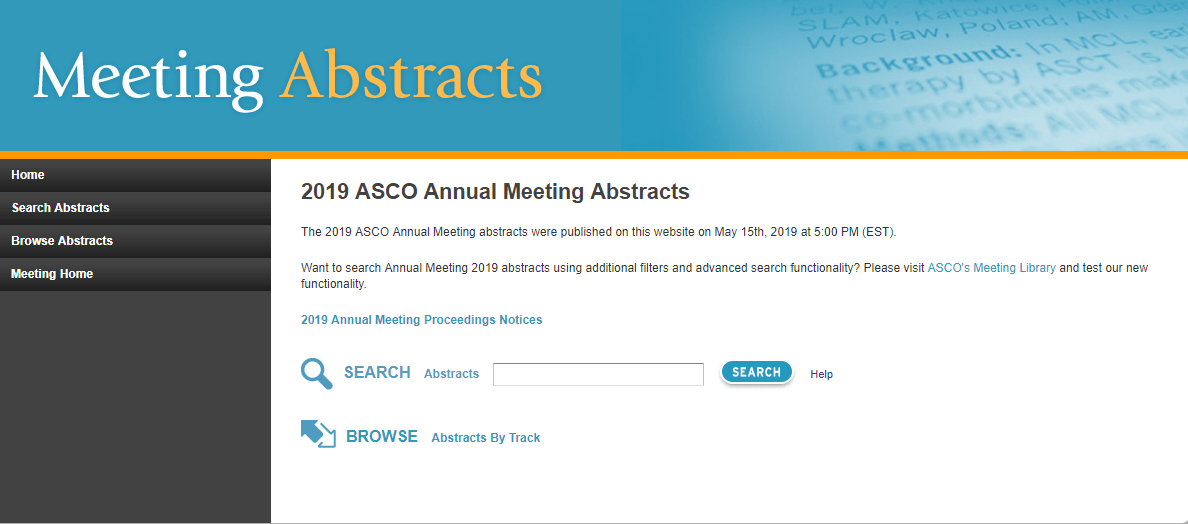
Follow-up evaluation of outliers with elevated spermine-spermidine acetyltransferase-1 activity.
Sub-category:
Circulating Biomarkers
Category:
Developmental Therapeutics and Tumor Biology (Nonimmuno)
Meeting:
2019 ASCO Annual Meeting
Abstract No:
e14536
Citation:
J Clin Oncol 37, 2019 (suppl; abstr e14536)
Author(s): Andrew W. Maksymiuk, Paramjit S. Tappia, Bram Ramjiawan, Nazrina Khatun, Rahnuma Parveen, Rashiduzzaman Ahmed, Gina Huang, Rashid Bux Ahmed, Parveen S. Akhtar, Horacio Bach, Daniel Sitar; CancerCare Manitoba, Winnipeg, MB, Canada; Asper Clinical Research Institute, St. Boniface Hospital, Winnipeg, MB, Canada; National Institute of Cancer Research and Hospital, Dhaka, Bangladesh; FastBios, Dhaka, Bangladesh; Biomark Diagnostics Inc, Richmond, BC, Canada; University of British Columbia, Vancouver, BC, Canada; University of Manitoba, Winnipeg, MB, Canada
Abstract:
Background: In the evolving role of biomarkers, proteinomic signatures related to up-regulation of polyamine synthesis including spermine/spermidine acetyltransferase-1 (SSAT-1) appear to be promising markers of malignancy. Acetylamantadine (AA) excretion, a measure of SSAT-1 up-regulation, has been shown to be a marker for malignant proliferation. In preliminary analyses of ostensibly normal individuals from Canada (Winnipeg) and Bangladesh (Dhaka), a proportion were identified to have evidence of SSAT-1 up-regulation above the expected non-malignant range (outliers). These outliers were assessed and followed for development of identifiable medical conditions. Methods: SSAT-1 up regulation was assessed in 60 ostensibly normal individuals by analysis of urinary excretion of AA after ingestion of amantadine 200 mg x 1 dose. AA was assayed using HPLC-mass spec techniques as previously described. Outliers who consented were followed-up by clinical examinations, routine biochemical and hematological tests and radiographs, where indicated. Results: Total AA average (median) excretion at 6 hrs in the Winnipeg cohort was 579+/-252 vs 1699+/-633 ng in the Dhaka cohort. Average urinary concentration at 6 hrs was 3.75+/-0.75 vs 21+/-20 ng/ml. In outliers consenting to follow-up, 1 case of invasive malignancy was identified, 6 cases of pre-malignant neoplastic change, chronic liver disease in 7 cases and chronic inflammation in 2 cases. In others, no malignant or inflammatory conditions have yet been identified. The range of SSAT-1 activity in individuals living in Bangladesh was significantly higher than in the Canadian cohort. Bangladesh volunteers live in an area of known to have high natural contamination with arsenic, a recognized carcinogen and they are exposed to high levels of air pollution. Conclusions: By this assay, high SSAT-1 activity has been confirmed in patients harbouring malignancy; however, pre-malignant and inflammatory conditions may result in a positive test. Follow-up of individuals with elevated SSAT-1 activity may reveal unrecognized malignancies, pre-malignant neoplasms, liver disease, inflammatory conditions and possibly false-positivity in individuals exposed to carcinogens such as arsenic. In further work, SSAT-1 up-regulation is being correlated with 5 other putative polyamine metabolite markers for accurate diagnosis of lung cancer.




